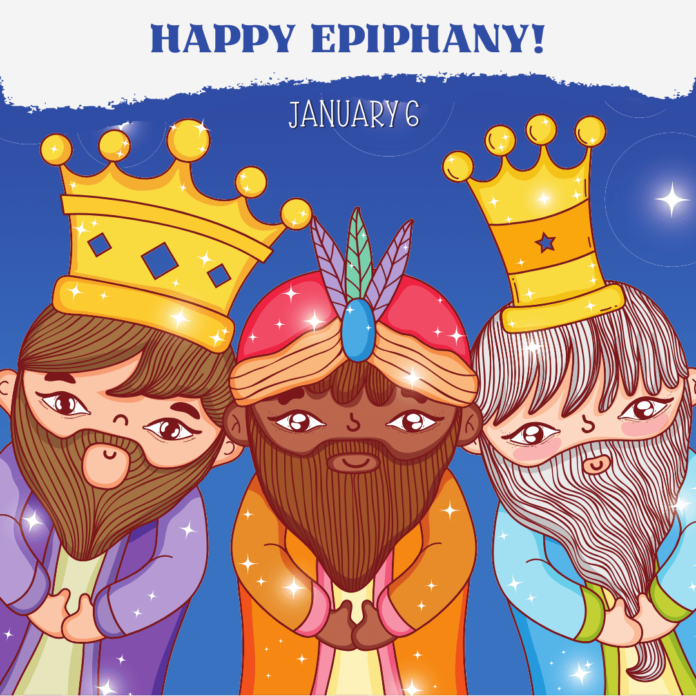Date of Epiphany 2025
Epiphany 2025 is celebrated on January 6th by most Christian traditions. This date marks the end of the 12 Days of Christmas, which begin on December 25th.
Also Read: World Day of War Orphans 2025: Date, Theme, History, Importance, Challenges, Activities and Quotes
Also Read: National Bird Day 2025: Date, Theme, History, Significance, Activities and Quotes
Also Read: National Whipped Cream Day 2025: Date, History, Significance, Activities, Recipes and Fun-facts
Also Read: World Braille Day 2025: Theme, Date, History, Significance, Activities, Challenges and Quotes
Meaning of Epiphany in Christianity
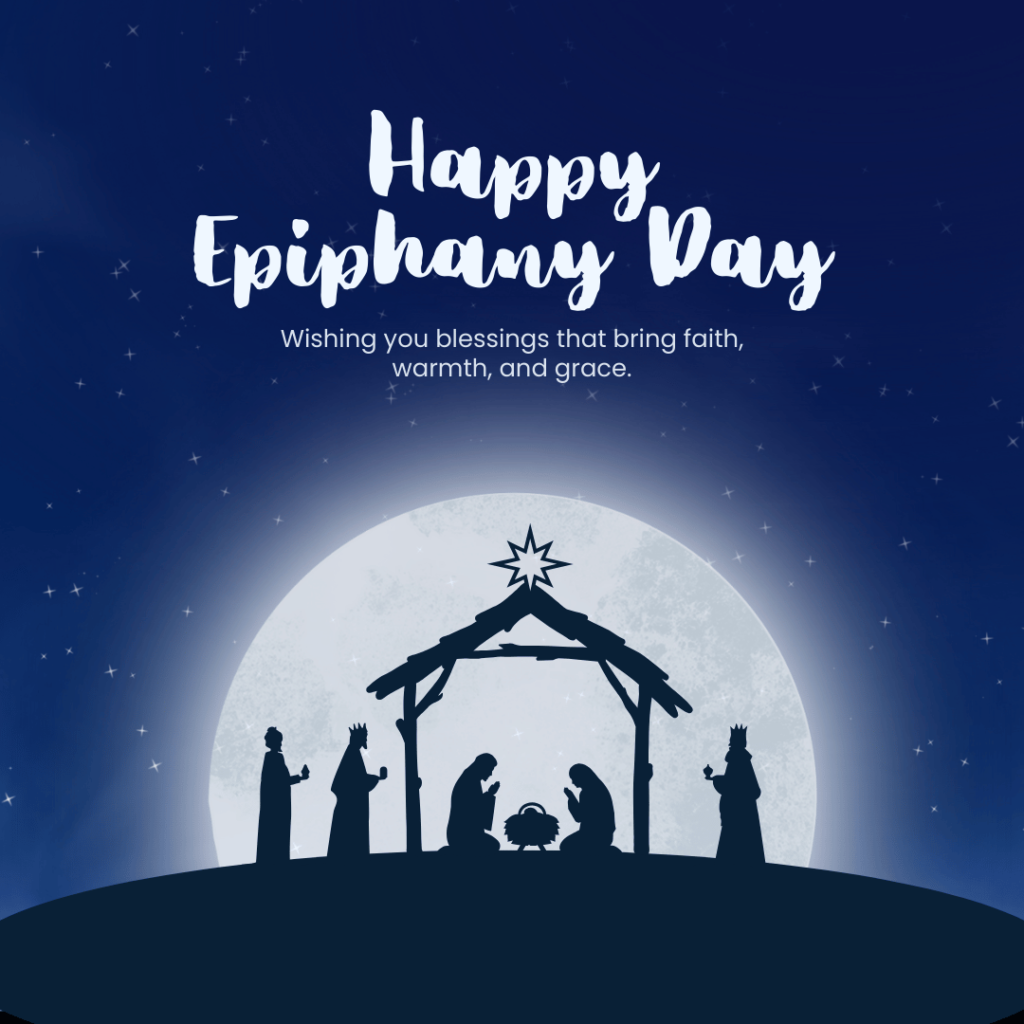
In Christianity, Epiphany is a significant holiday that celebrates the revelation of Jesus Christ as the Son of God. The term “Epiphany” comes from the Greek word epiphaneia, meaning “manifestation” or “appearance.” It highlights the moment when Jesus was recognized as divine, particularly by those outside the Jewish faith.
The event most commonly associated with Epiphany is the visit of the Magi (also known as the Wise Men or Three Kings) to the baby Jesus in Bethlehem. Guided by a star, the Magi brought gifts of gold, frankincense, and myrrh, symbolizing Jesus’ role as a king, divine figure, and savior.
For many Christians, Epiphany also commemorates other instances of Jesus’ divine nature being revealed, such as His baptism in the Jordan River and His first miracle at the wedding in Cana.
History of Epiphany
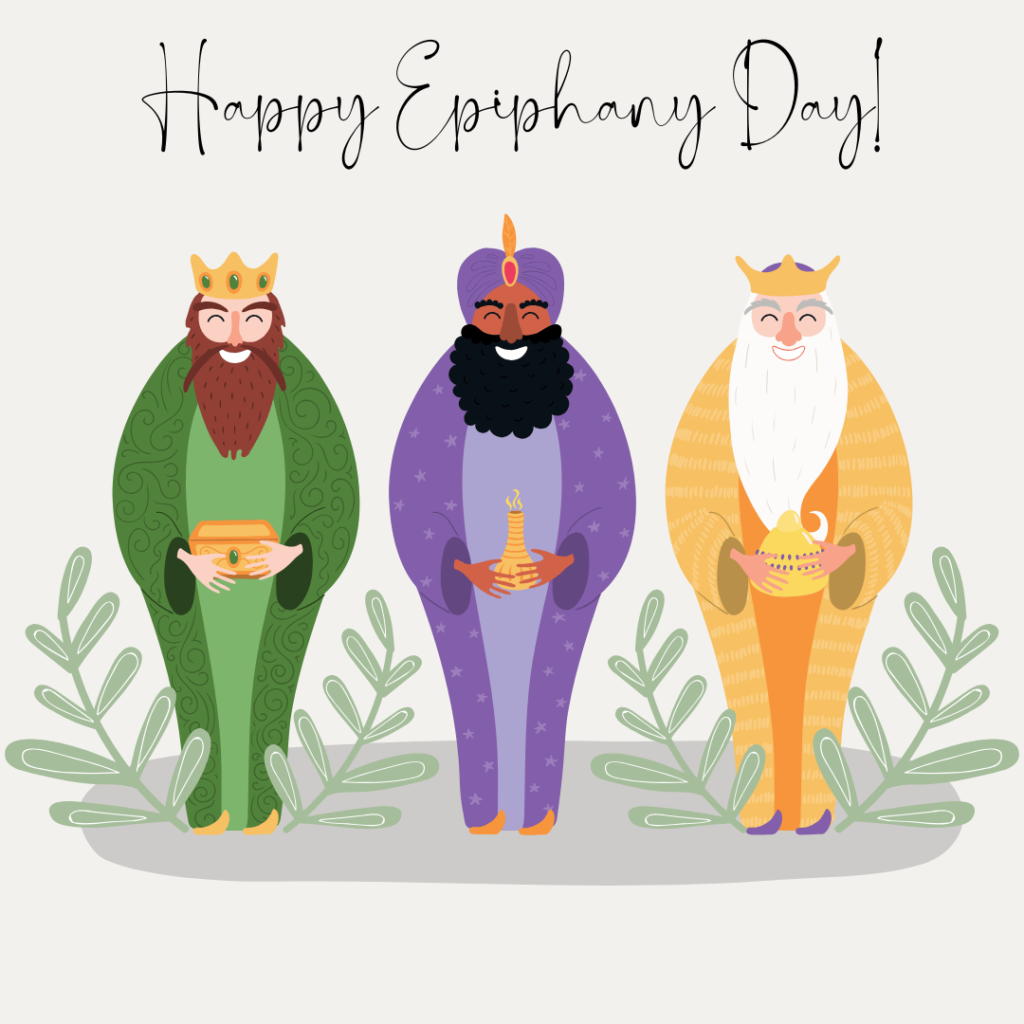
Epiphany is one of the oldest Christian feasts, with its origins dating back to the early centuries of Christianity. Initially celebrated in the 3rd century by the Eastern churches, it commemorated several significant events in Jesus’ life, including His birth, the visit of the Magi, His baptism, and His first miracle at the wedding in Cana. These events shared the common theme of Jesus’ divine revelation to the world.
By the 4th century, the Western Church adopted the feast, focusing on the visit of the Magi as a symbol of Jesus being revealed to the Gentiles, highlighting the universality of His mission. Over time, the emphasis of the feast diverged, with the Western Church celebrating the Magi’s visit and the Eastern Church emphasizing Jesus’ baptism, referred to as Theophany, meaning “manifestation of God.”
During the Middle Ages, Epiphany became a widely recognized celebration with regional traditions such as feasting, parades, and gift-giving. Today, it is observed globally on January 6th (or January 19th in Eastern Orthodox traditions following the Julian calendar), with its rich history reflecting themes of light, revelation, and the inclusivity of Christ’s message.
Significance of Epiphany
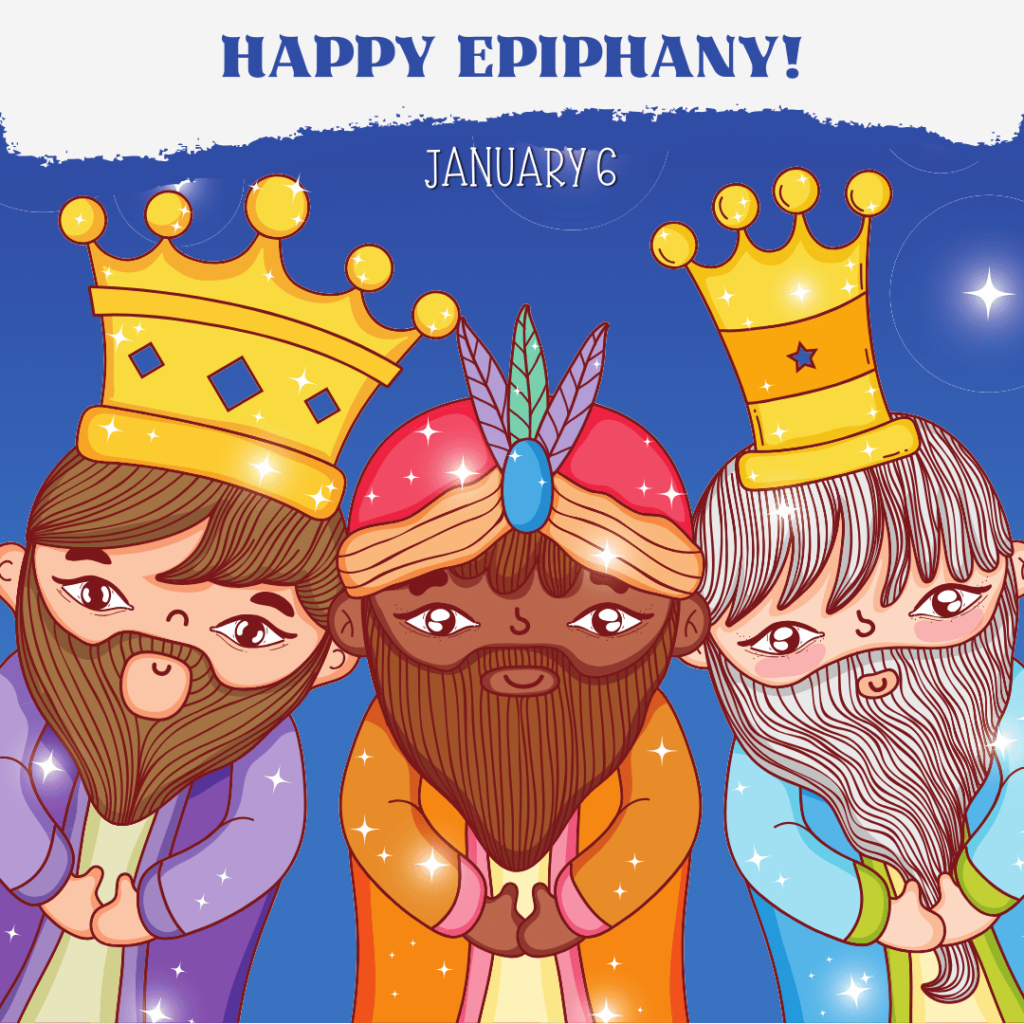
The significance of Epiphany lies in its celebration of the revelation of Jesus Christ as the Son of God and the Savior of the world. It marks key moments in His early life that highlighted His divine nature and universal mission. The holiday carries rich spiritual and symbolic meanings:
- Revelation to the Gentiles: Epiphany celebrates the visit of the Magi, or Wise Men, to the baby Jesus.
- Divine Recognition: It acknowledges events where Jesus’ divinity was revealed, such as the Magi’s homage, His baptism in the Jordan River, and His first miracle at the wedding in Cana.
- Universal Love: Epiphany emphasizes the universality of Christ’s mission, showcasing that His teachings and sacrifice are for everyone, regardless of their background or status.
- Spiritual Awakening: The word “Epiphany” means manifestation or appearance, encouraging believers to reflect on moments of spiritual insight and understanding in their own lives.
In essence, Epiphany is a celebration of light, revelation, and the inclusivity of God’s love, making it a profound and joyous occasion in the Christian calendar.
Traditions of Epiphany
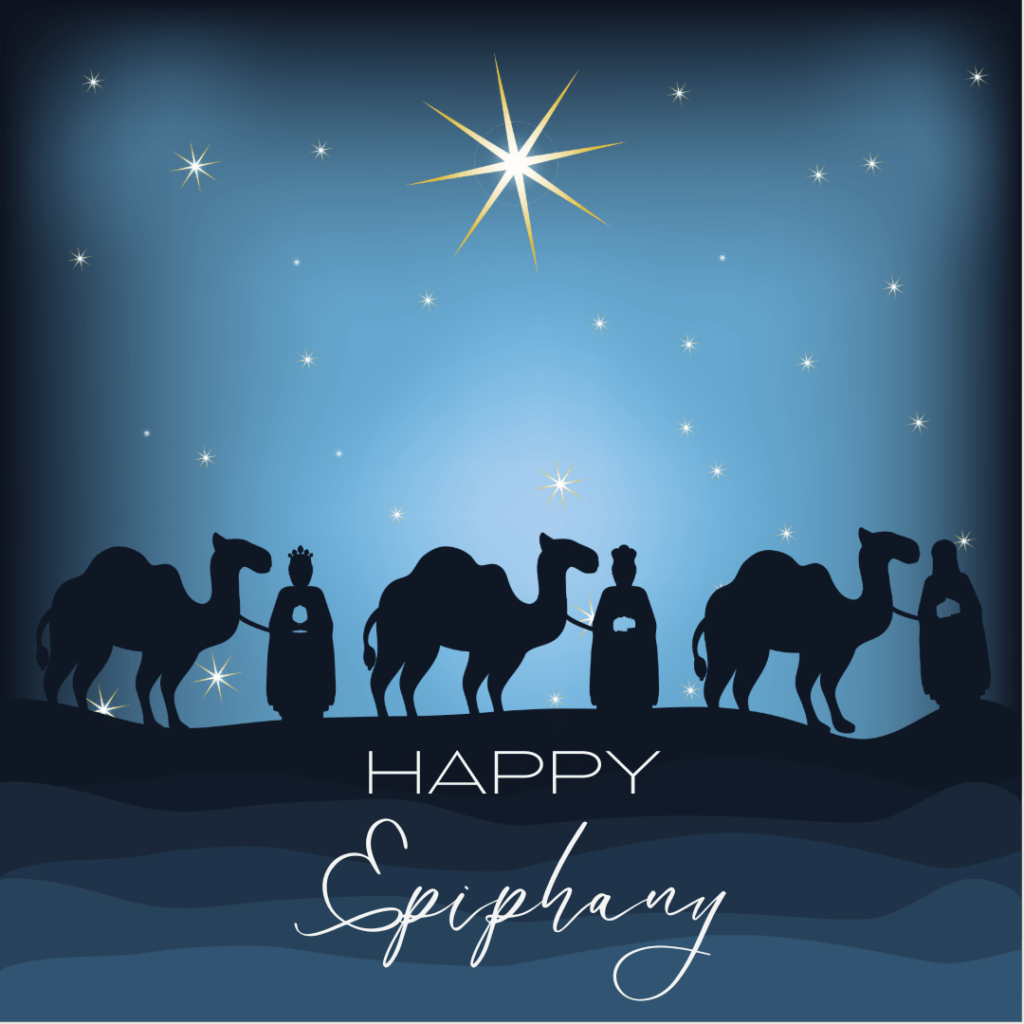
Epiphany traditions vary across cultures and regions, but they all reflect the central theme of celebrating the revelation of Christ to the world. Following are some common practices:
- Celebrating the Magi: Reenactments of the Wise Men’s journey to Bethlehem.
- Blessing of Homes: Marking homes with “C+M+B” and the year for blessings.
- Gift-Giving: Children receive gifts, symbolizing the Magi’s offerings.
- Special Foods: Sharing Rosca de Reyes (sweet bread) or Galette des Rois (almond pastry).
- Water Blessings: Priests bless water; swimmers retrieve a cross in Orthodox traditions.
- Singing and Parades: Carols and processions featuring the Three Kings.
- End of Christmas: Decorations are taken down, marking the conclusion of the season.
How do different cultures celebrate Epiphany?
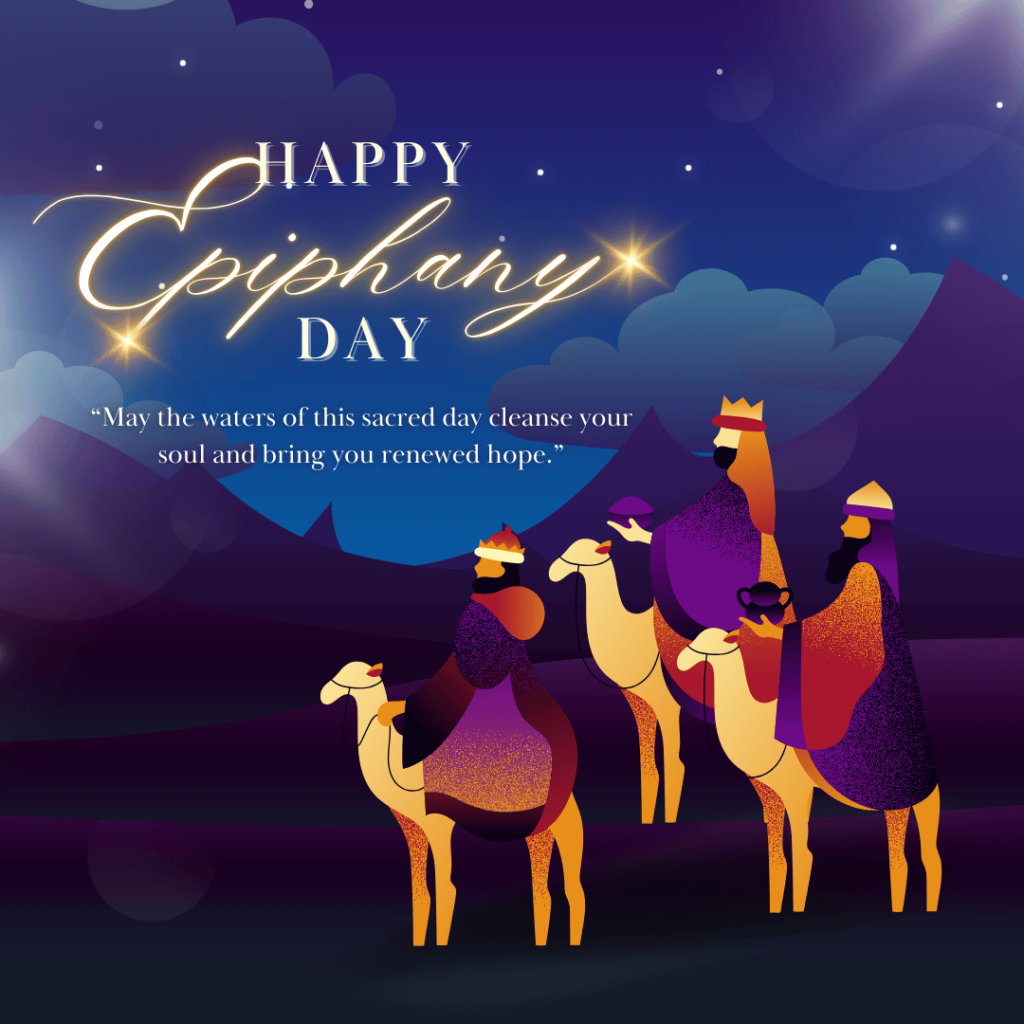
Epiphany is celebrated in diverse and unique ways across cultures, reflecting regional traditions, customs, and interpretations of the holiday’s meaning. Here’s how some cultures mark this special day:
Spain and Latin America
- Epiphany, known as Día de los Reyes (Three Kings’ Day), is a major celebration.
- Children receive gifts, symbolizing the Magi’s gifts to baby Jesus.
- Many places hold elaborate Three Kings’ Parades, with actors portraying the Magi and distributing sweets.
- Families share a Rosca de Reyes, a sweet bread with a hidden figurine of baby Jesus. The person who finds it hosts a future celebration.
Italy
- In Italy, Epiphany is associated with La Befana, a kindly old woman who delivers gifts to children.
- According to legend, she missed joining the Magi to visit Jesus but continues searching for Him, leaving gifts along the way.
- Festivities include processions and traditional foods like sweet pastries.
France
- The French celebrate Epiphany with the Galette des Rois, a flaky almond-filled pastry.
- A small figurine or bean is hidden inside, and the person who finds it becomes “king” or “queen” for the day.
Greece and Eastern Europe
- In Greece, Epiphany is called Theophany and centers on Jesus’ baptism.
- Priests bless water and throw a cross into a river, sea, or lake. Brave swimmers dive to retrieve the cross, symbolizing purification and renewal.
- Similar water-blessing rituals occur in other Eastern Orthodox countries like Bulgaria and Russia.
United Kingdom
- Epiphany marks the end of the 12 Days of Christmas, and people traditionally take down their Christmas decorations.
- In some regions, celebratory feasts and caroling continue as part of “Twelfth Night” festivities.
Mexico
- Families celebrate by sharing a Rosca de Reyes and exchanging gifts.
- Epiphany marks the end of the Christmas season, and communities often reenact the story of the Magi’s visit.
Germany and Austria
- Groups of children dress as the Magi, visit homes, and sing carols, a tradition called Sternsingen (Star Singing).
- They write the year and “C+M+B” (Caspar, Melchior, Balthasar or Christus Mansionem Benedicat) on doorways as a blessing.
Philippines
- Known as Pasko ng Pagkabuhay, Epiphany involves church services, processions, and family gatherings to honor the Magi and the revelation of Christ.
Epiphany 2025: Frequently Asked Questions (FAQ’s)
1. What is Epiphany in Christianity?
A: Epiphany is a Christian holiday that celebrates the revelation of Jesus Christ as the Son of God. It’s also known as the “Feast of the Epiphany” or “Theophany.” The event highlights the visit of the Magi (Wise Men) to the baby Jesus, symbolizing that Christ came for all people, not just for one group.
2. When is Epiphany celebrated?
A: Epiphany is observed annually on January 6th, though some churches may celebrate it on the Sunday closest to that date. In some traditions, this marks the end of the 12 days of Christmas.
3. What is the significance of Epiphany?
A: The day symbolizes the manifestation of Jesus to the world, specifically to the non-Jewish (Gentile) world. The visit of the Magi is seen as a turning point, showing that Jesus’ message is universal and meant for everyone.
4. How is Epiphany different from Christmas?
A: Christmas celebrates Jesus’ birth, while Epiphany emphasizes the revelation of His divinity to the world. Christmas focuses on the nativity, while Epiphany highlights the visit of the Magi and, in some traditions, Jesus’ baptism and first miracle.
5. Why is Epiphany called Three Kings’ Day?
A: It’s called Three Kings’ Day because it commemorates the visit of the Magi, often referred to as the “Three Wise Men” or “Three Kings.” These visitors brought gifts of gold, frankincense, and myrrh to honor Jesus.
6. What foods are traditionally eaten on Epiphany?
A: Epiphany feasts differ worldwide:
- King cake in many countries, with a hidden charm or bean inside.
- Rosca de Reyes (a ring-shaped bread) in Latin America.
- Festive meals with seasonal treats like nuts, dried fruits, or spices.
7. What is the origin of the Epiphany holiday?
A: Epiphany originated in the early Christian church, likely in the 3rd century. Initially celebrated in Eastern churches, it marked multiple aspects of Jesus’ life. Western churches later focused on the Magi’s visit.
8. How is Epiphany related to the Magi?
A: The Magi, often described as wise men or kings, followed a star to Bethlehem and offered gifts to Jesus. Their journey symbolizes the recognition of Jesus as the Savior, not just for Jews but for all nations.
9. What is the Epiphany season in the liturgical calendar?
A: The Epiphany season begins on January 6th and lasts until the beginning of Lent (Ash Wednesday). This period celebrates Jesus’ public ministry, including His baptism and miracles.
10. Why do some people take down Christmas decorations on Epiphany?
A: Traditionally, Epiphany marks the end of the Christmas season, making it a logical time to pack up decorations. Some cultures believe leaving decorations up after Epiphany brings bad luck.
11. What is the symbolism of the gifts given by the Magi on Epiphany?
A: Each gift from the Magi had deep meaning:
- Gold: Represented Jesus’ kingship.
- Frankincense: Symbolized His priestly role and divinity.
- Myrrh: Foreshadowed His suffering and death.


